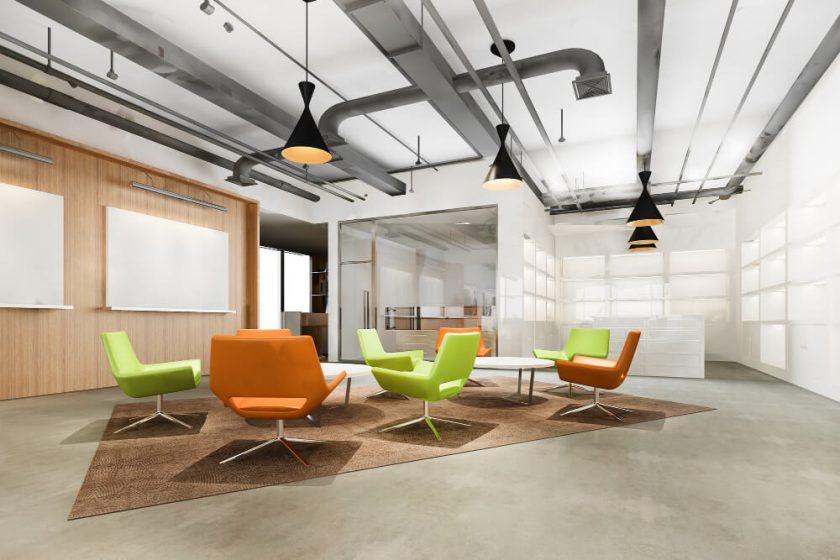In the fast-paced and technology-driven world of today, we find ourselves spending a significant portion of our lives in the confines of an office.
Regardless of whether you are a remote worker or if you are working in an office setting, the impact of your workspace on the quality of your life cannot be overstated.
This is where the concept of ergonomics comes into play, representing the science of designing a workspace to optimize human performance and well-being.
Crafting a comfortable office environment isn’t just about aesthetics; it’s about recognizing the profound influence that ergonomics can have on our physical health, mental well-being, and overall productivity.
1. Understanding Ergonomics
At its core, ergonomics is the study of the interaction between individuals and their work environment. This encompasses everything from the layout of your office space to the design of your furniture and the tools you use daily.
The primary goal of ergonomics is to create a workspace that minimizes the risk of musculoskeletal disorders, enhances comfort, and promotes optimal efficiency.
This means considering the placement of your computer monitor, the height of your chair, the design of your keyboard, and even the lighting in your workspace. A well-designed ergonomic office isn’t just a luxury; it’s an investment in your health and productivity.
2. Enhancing Productivity
One of the most significant advantages of an ergonomically designed office is its positive impact on productivity. When your workspace is tailored to your needs and promotes comfort, you’re likely to experience fewer distractions and less discomfort throughout the day. This can lead to a substantial increase in focus and efficiency.
For instance, a well-positioned monitor at eye level reduces the strain on your neck and eyes, preventing fatigue and enhancing your ability to concentrate on tasks. Similarly, an adjustable chair allows you to find the perfect posture, reducing the risk of discomfort and distractions during prolonged work periods.
Moreover, an ergonomic office environment is not only about preventing physical discomfort; it also plays a crucial role in mental well-being. A clutter-free and well-organized workspace can contribute to a clearer mind and reduced stress levels.
Ergonomics recognizes the interconnectedness of physical and mental health, understanding that a comfortable environment can foster a positive mindset and enhance overall job satisfaction.
3. Mitigating Health Risks
The sedentary nature of many office jobs has been linked to various health concerns, including obesity, cardiovascular issues, and musculoskeletal disorders. Ergonomics seeks to address these concerns by promoting movement and providing solutions to reduce the risks associated with prolonged sitting.
Adjustable sit-stand desks, for example, allow individuals to change their working positions throughout the day, promoting better circulation and reducing the strain on the spine. Incorporating ergonomic principles into your office setup can contribute to a healthier lifestyle, mitigating the health risks associated with a sedentary work routine.
In addition to physical health, ergonomics also addresses the impact of the office environment on mental health. Poorly designed workspaces can contribute to stress, anxiety, and burnout. On the other hand, a thoughtfully crafted ergonomic office takes into account factors like lighting, noise levels, and overall layout to create a conducive atmosphere for concentration and well-being.
By prioritizing the long-term health and happiness of employees, organizations not only foster a positive work culture but also reduce absenteeism and increase overall productivity.
4. The Role of Technology
In the digital age, where much of our work involves staring at screens for extended periods, the role of technology in ergonomics cannot be overlooked. Properly calibrated monitors, ergonomic keyboards, and adjustable mice contribute to a seamless and comfortable digital experience. Software solutions that encourage regular breaks and provide ergonomic tips further enhance the overall impact of technology on our well-being.
Integrating ergonomics into the digital workspace is not just about comfort; it’s about harnessing technology to create a work environment that supports our physical and mental health in the face of increasing reliance on digital tools.
As we continue to embrace remote work and digital collaboration, the need for ergonomic considerations in the virtual workspace becomes even more critical. Ensuring that employees have the right equipment, proper training on digital ergonomics, and access to ergonomic support can bridge the gap between the physical and digital aspects of our work lives.
By prioritizing the integration of ergonomics into the digital realm, organizations can create a holistic approach to employee well-being, regardless of their physical location.
5. Future-proofing Workspaces
The concept of ergonomics isn’t static; it evolves with changing work dynamics and technological advancements. Future-proofing workspaces involves staying ahead of the curve in terms of ergonomic design and adapting to the evolving needs of employees.
This includes embracing flexible work arrangements, accommodating diverse work styles, and incorporating the latest ergonomic innovations. By continuously assessing and updating office environments, organizations can create spaces that not only meet the current needs of their workforce but also anticipate and address future challenges.
Adapting to changing work dynamics also involves recognizing the individuality of each employee. What works for one person may not work for another, and a one-size-fits-all approach to office design is no longer sufficient.
Ergonomics acknowledges the importance of customization, allowing individuals to tailor their workspaces to their specific preferences and requirements. This not only enhances comfort but also empowers employees to take an active role in creating an environment that supports their unique work habits and needs.
Conclusion
In conclusion, the power of ergonomics lies in its ability to transform the way we work, impacting our physical health, mental well-being, and overall productivity.
The goal of creating a comfortable working environment is not just a luxury reserved for a select few, but it’s a strategic investment in the success and happiness of a company’s employees.
As we navigate the evolving landscape of work dynamics, integrating ergonomic principles into our offices is not just a choice; it’s a necessity for a healthier, happier, and more productive workforce.
Choosing the appropriate fit out company in Dubai holds paramount importance in guaranteeing the success of your project while aligning with your vision and needs.
Partnering with the right office fit out company in Dubai empowers you to surpass expectations and establish a workspace that serves as a catalyst for success.


